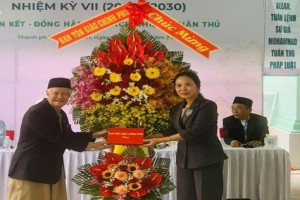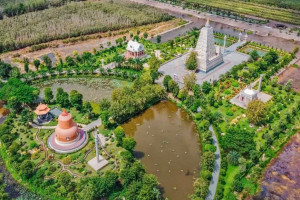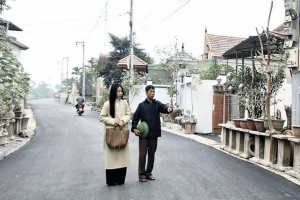
The Vietnam Archaeological Association in collaboration with Quang Ninh Museum has implemented archaeological excavations at Trai Cap pagoda relic site, and discovered many precious archaeological artifacts of cultural and historical values, which could serve as scientific evidence in a scientific dossier proposing UNESCO to recognize the Yen Tu relic and scenic complex as a world heritage.
Excavations at Trai Cap pagoda relic site on an area of over 400m2 were started on July 25.
At four archaeological pits, archaeologists have discovered traces of various types of pillars decorated with lotus motifs, pieces of architectural materials such as bricks, lining tiles, lotus nose tiles, pieces of glazed pottery and porcelain under the Trần and Lê Trung Hưng dynasties, etc. In particular, at the archaeological pit No.2, a brown flower ceramic lampstand which typical type of glazed ceramic under the Trần Dynasty was found.
Based on physical traces, it can be initially determined that Trai Cap pagoda was built under the Trần dynasty with a fairly large scale, and was restored during the Lê Trung Hưng and Nguyễn dynasties.
The relic site is located on a low hill posited with 21012'94'' North latitude and 10606'23' East longitude, in Trang Luong commune’s Linh Trang village of Quang Ninh province’s Dong Trieu provincial city, which on the pilgrimage route to the Ho Thien pagoda relic site and about 3.2km southeast of this pagoda. Trai Cap pagoda was discovered in 2016 by an investigation and survey.




